XR Blood Money March: Protesters demand systems change as paint splattered through City of London
Demonstrators gathered in the City of London, daubing paint, stopping traffic and occupying intersections in Extinction Rebellion’s Blood Money March
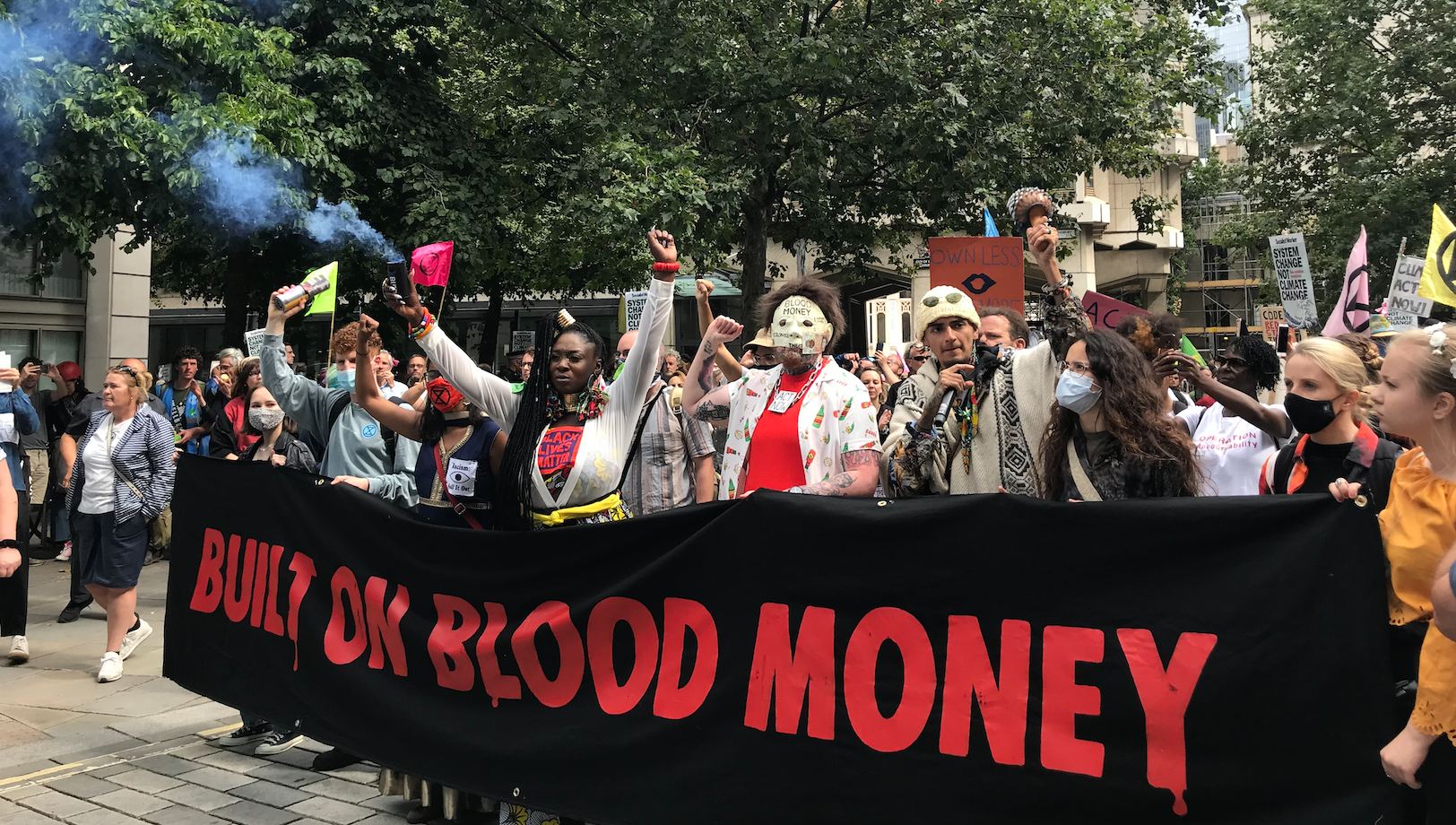
Extinction Rebellion protesters sprayed parts of the City of London red on Friday during what the group called a “Blood Money” march to draw attention to financial institutions they claim are complicit in environmental racism and exploitation.
Protesters clad in business suits and masks held signs reading “Fossil fuel finance is killing the Earth” and “The financial industry is bleeding the Earth dry”.
Paternoster Square, in front of the London Stock Exchange, was also doused in “blood” – blackberry and raspberry juice – before demonstrators stuck two-pence pieces to the ground with gum to represent what they called blood money.
The march was organised in partnership with anti-racism group United for Black Lives, and Extinction Rebellion said it aimed to “highlight the blood-soaked profiteering of our financial system”.
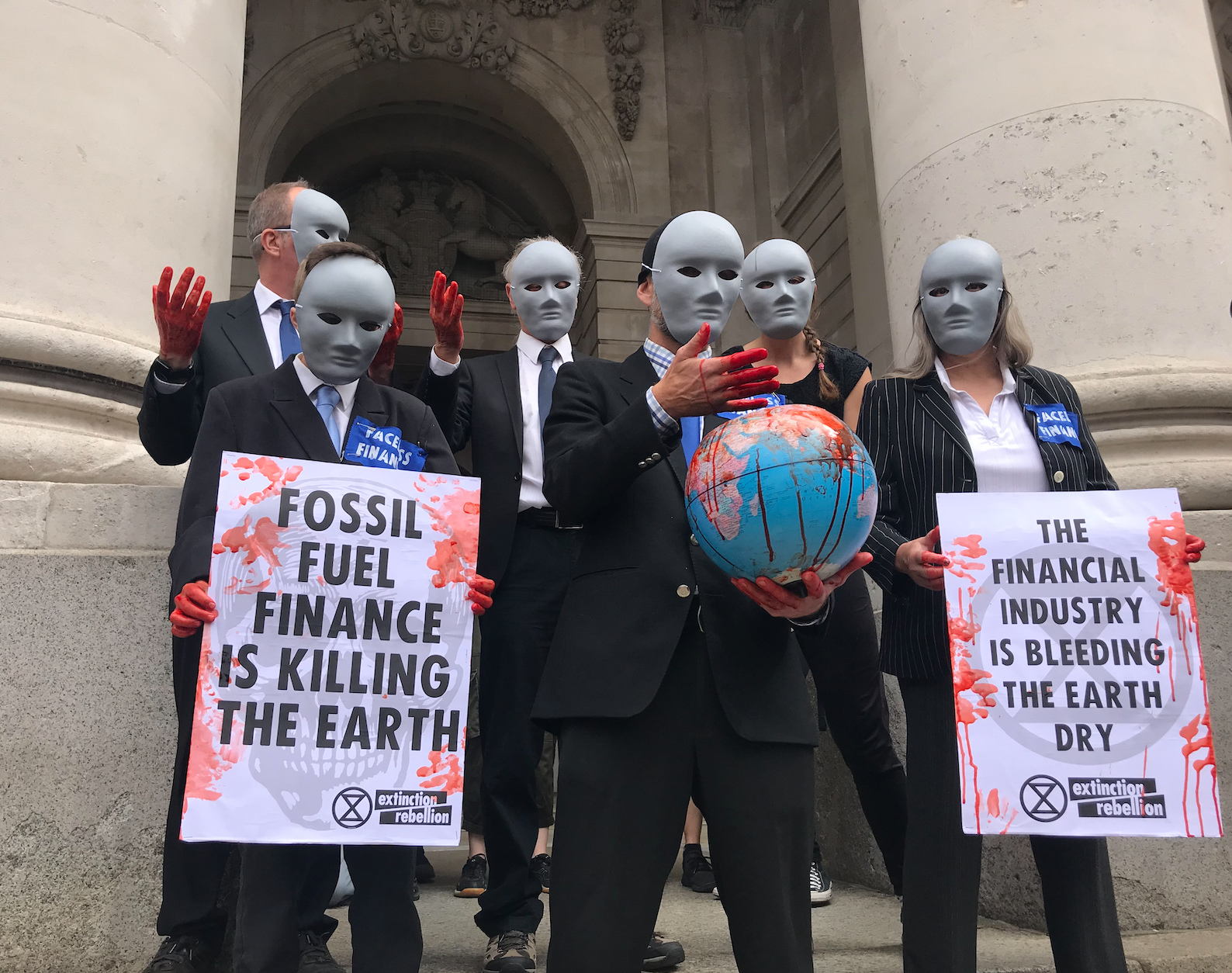
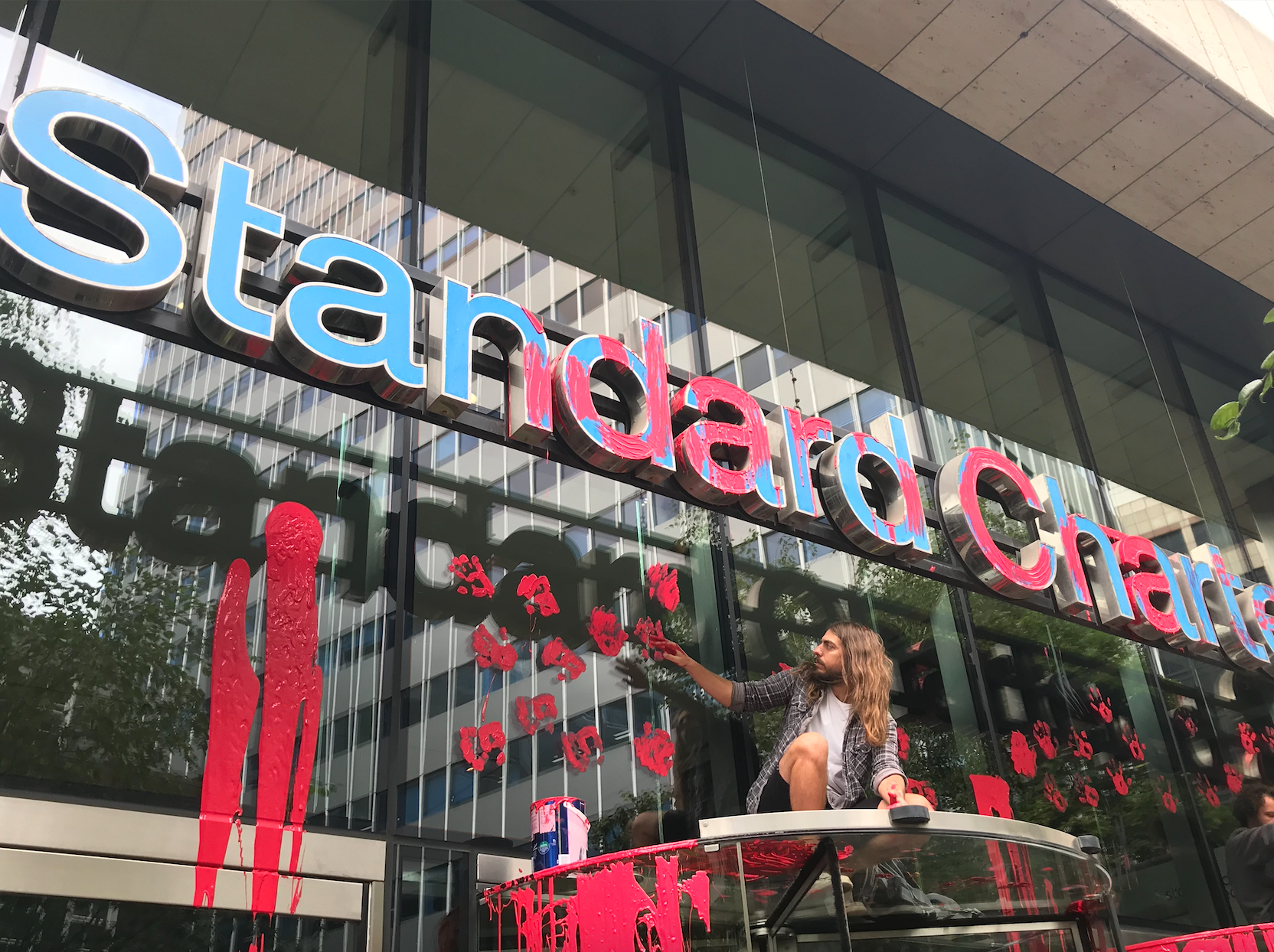
Crowds marched from the Bank of England to Standard Chartered Bank, where demonstrators scaled the entrance and daubed red paint on the building, marking it in handprints and dripped paint.
Katie Wallace, 54, an artist who does some art for XR, including the banner she was carrying at the march, told The Independent: “It’s terrifying when you start reading all the facts of the IPCC reports, and it says that we’re heading for three degrees warmer by 2050.”
She said the governments’ goal of carbon neutrality by 2050 was “too late”. Rather, she said that radical policy changes were needed “in the next few years, otherwise, we’re all going to be burned, we’re going to be boiled to death, We’re going to have tons of mass migration and no food security.”
She added: “Everybody’s got to do their personal best as much as they can, but really, we do need system changes, like, quite radical ones, and we need a government that’s prepared to do that, and we need financiers that are prepared to stop funding fossil fuels now.”
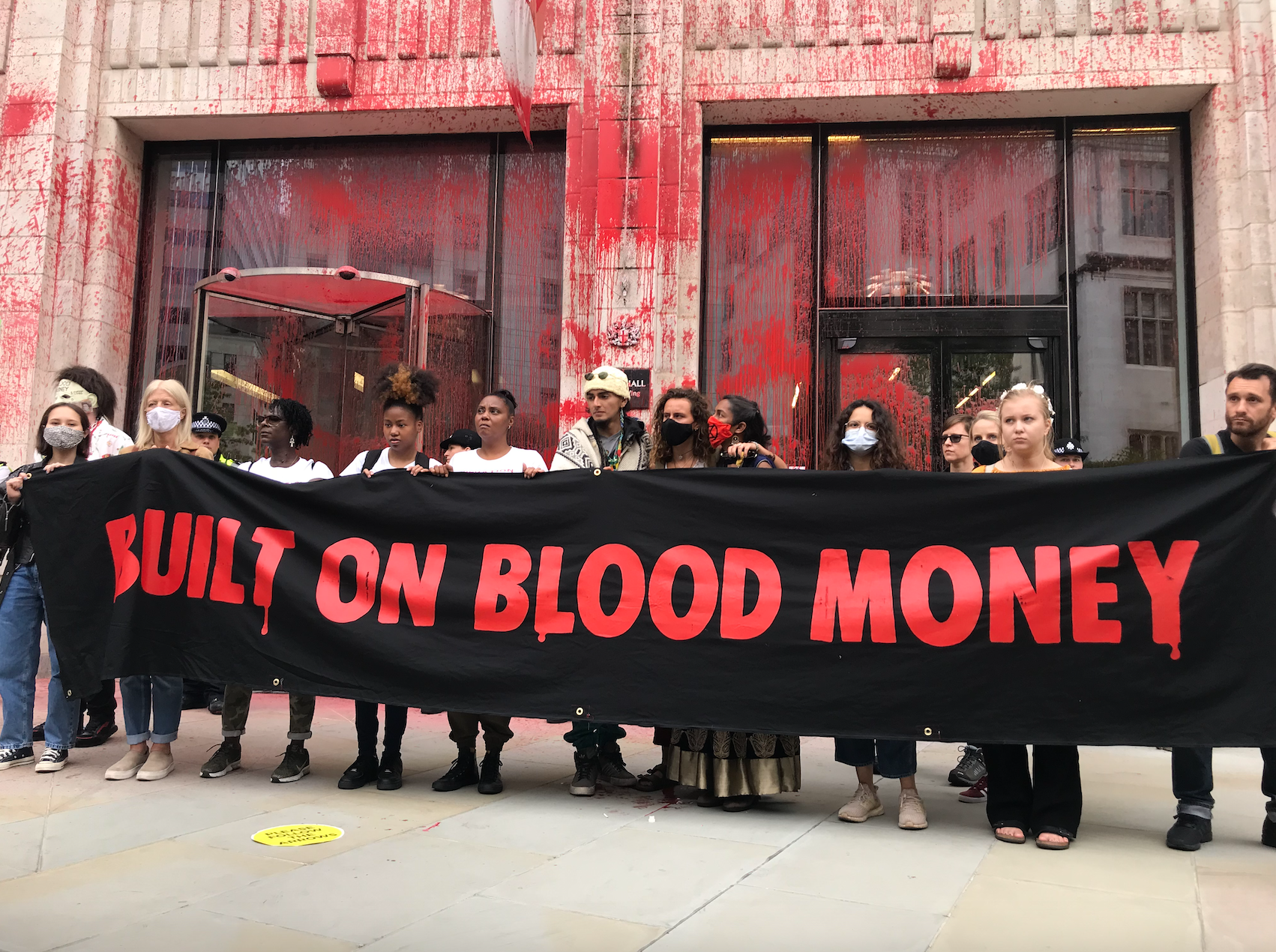
Crowds then gathered at Guildhall, the administrative centre for the City of London, where red paint was splattered on the historic building as XR supporters held a banner that read: “Built on blood money”.
While marching, Julia, who did not want to give a last name, said: “This economy was built on slave labour. What’s more, trade and money that banks are putting into fossil fuel projects are actually causing death.”
The 31-year-old, who is taking annual leave from her job to engage in the XR demonstrations, said that she hoped to draw attention to the impact banks continue to have by investing in oil, gas and coal projects.
John Atkinson, 55, a retired psychiatry aide, said he was attending the Blood March because he was disappointed in the government’s “Build back better” campaign.
“The governments and the banks make all these noises about sustainability, but then what they actually do is put their money back into the same fossil fuel intensive industries, as they have been doing in the past. They’re saying one thing, then doing what they’ve always been doing.”
“It’s kind of ironic,” he added, “One of our demands is to act now, and actually, they are acting but not in the way that we meant. They’re just pretending. Maybe part of their heart is in the right place, but it’s just not enough, it’s pitifully not enough.”
The march then moved to 65 Gresham Place – the home of Debevoise and Plimpton, a law firm that has defended oil and gas giant Shell’s corporate interests. Here, demonstrators attempted again to daub the building in paint, but were stopped by police. Two protesters were taken away in handcuffs.
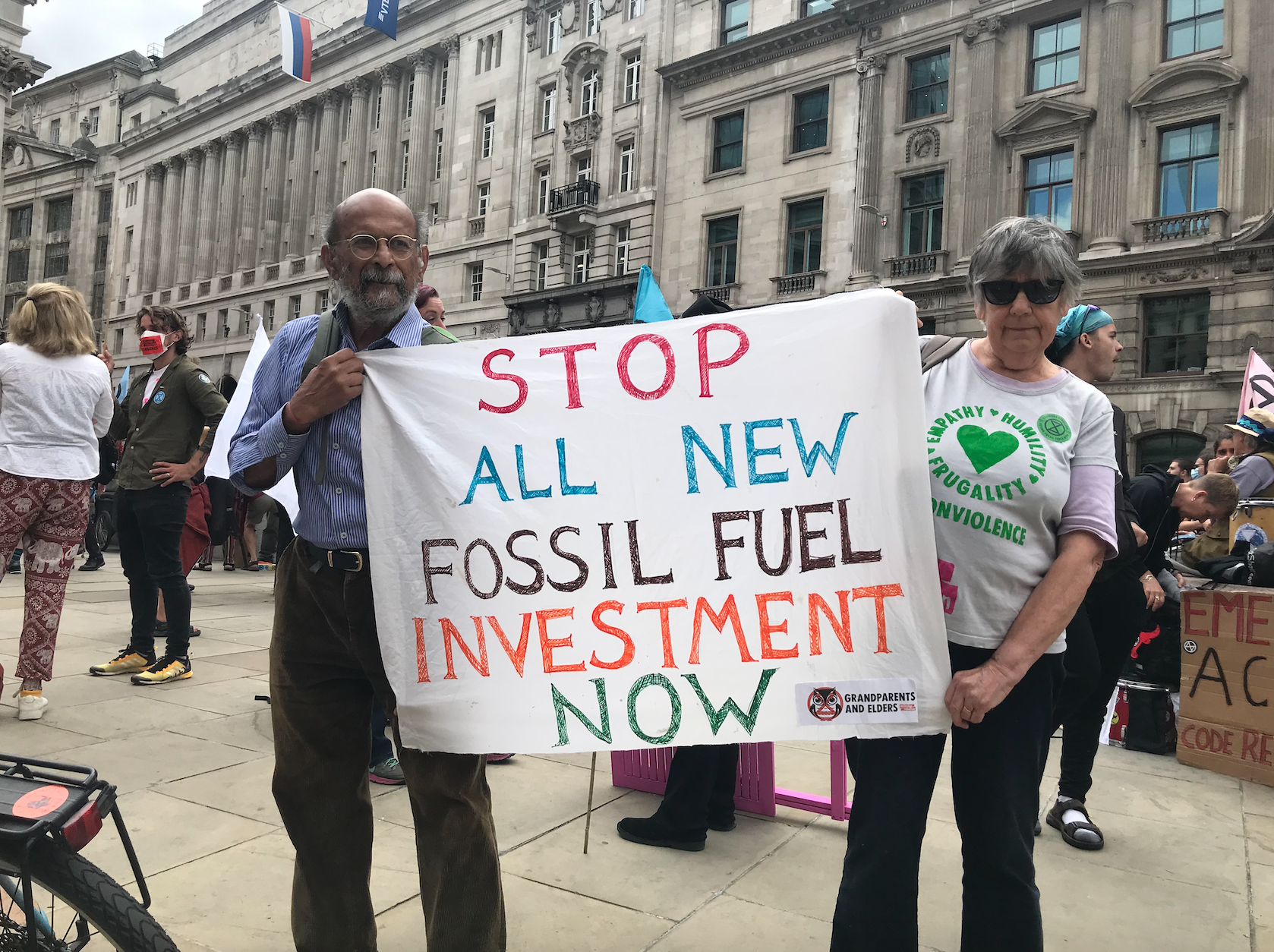
Margaret Mukherjee, and Crilokesa Mukherjee, grandparents of five, marched holding a banner, said that they were at the protest to call out the government for continuing to invest in fossil fuels. “We need to stop all this and try and live, rather than rush headlong towards what is going to be a terrible future for our grandchildren,” Ms Mukherjee said.
“On a personal level, you can give up a car, you can change your bank to be more sustainable, you can put your money where it’s more sustainable for the environment. We can all do things for it, but they don’t change the actual system. And for me, it’s the system, that’s why I’m here,” she added.
The march continued through the City of London, reaching Paternoster Square, where the crowd was urged to “make the London Stock Exchange our new dance floor”.
Amid the dancing , orange smoke was released, and with that as the signal, juice was poured in the centre of the square, two-pence pieces were stuck to the ground using gum, as protesters continued to dance.
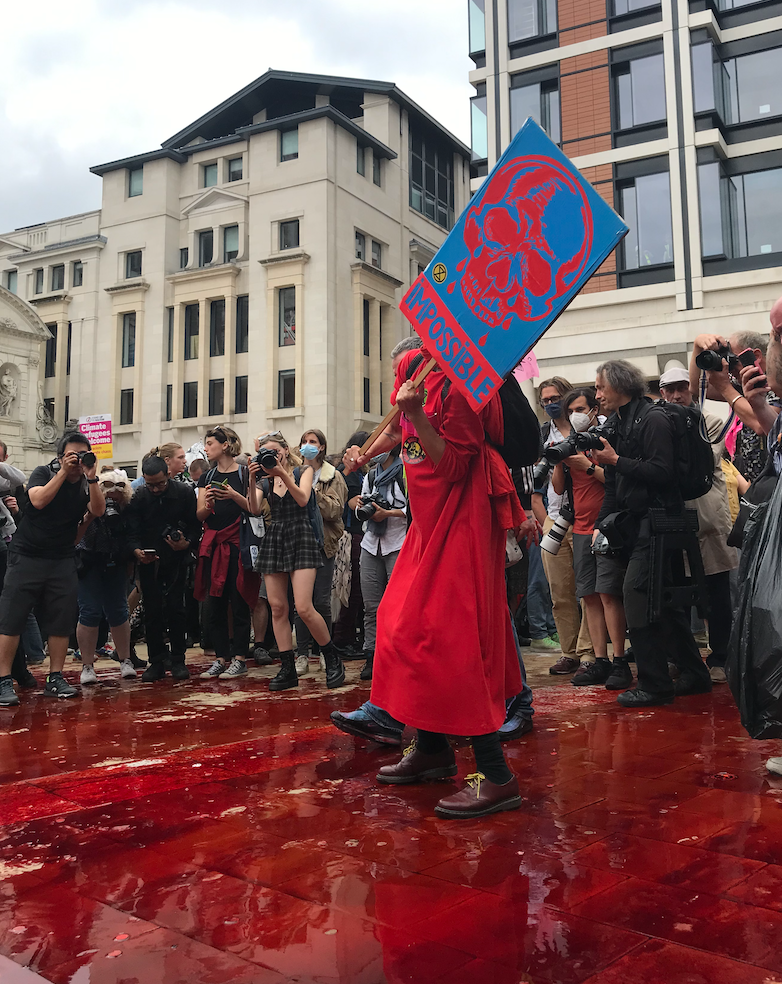
Throughout the march, Marvina Newton called for change by “decolonising” the economy. She said: “We’re saying that we need to decolonise the economy. And the only way we can do that is by us telling the truth, and powerful organisations of how colonisation and capitalisation has affected marginalised and disadvantaged communities, mostly those from the global south.
“By working with our allies, we are united for black lives and working with BLM green, we can come together to tackle these inequalities.”
She added that the turnout for the march was “amazing” with a “couple of thousand” of demonstrators turning up, which was higher than expected.
Following a two-hour reprieve, organisers urged the crowd to “take another walk”.
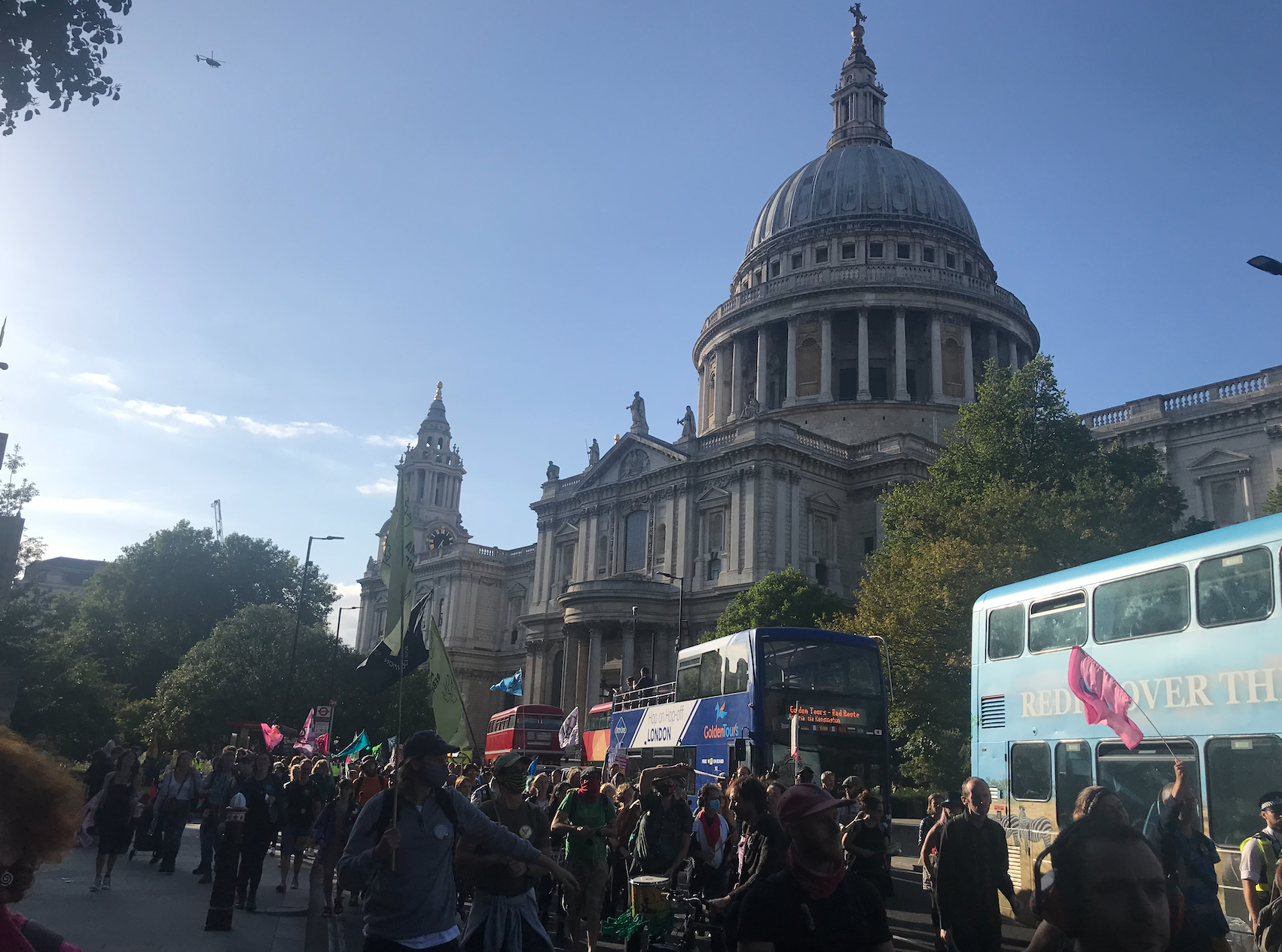
Demonstrators marched past St Pauls cathedral before speeding up and running along Cannon Street to reach Mansion House Junction.
Protesters holding banners blocked all roads into the junction, whilst others assembled and scaled wood and cable structures in the intersection.
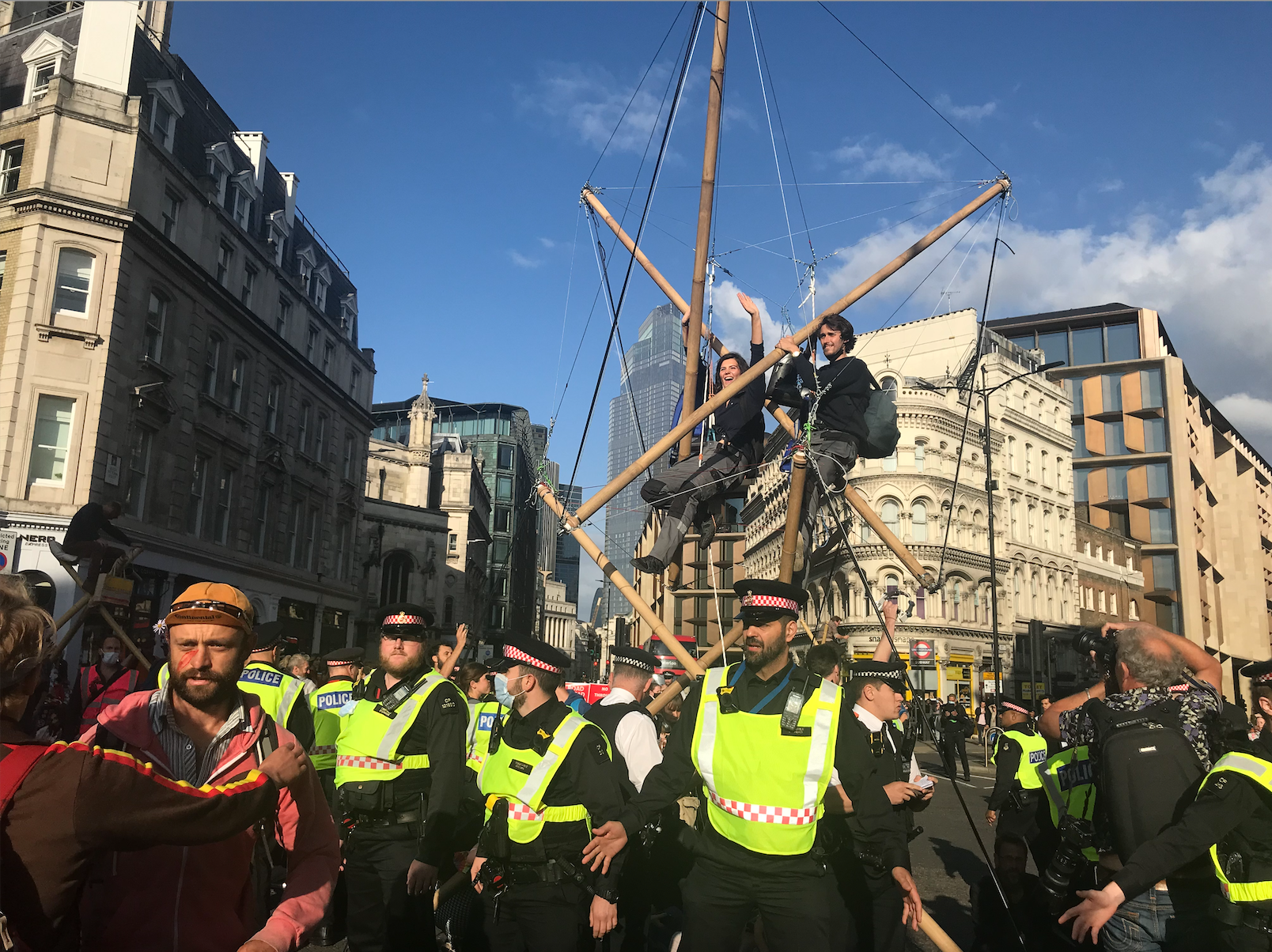
Police rushed to surround the structures as demonstrators filled the junction. Shortly thereafter protesters were urged by organisers to sit down and “occupy space” in the intersection as drumming and music filled the area. Over time, the Met Police surrounded the intersection.
While largely peaceful, after an hour, police officers began going through the crowd, telling individual protesters that a Section 14 notice would be issued, and that anyone in the intersection could be arrested for blocking a public highway.
Friday’s protests mark the fifth day of action in XR’s two-week “Impossible Rebellion” campaign, which aims to disrupt “business as usual” in London. As of 6pm Friday – before the intersection was cleared – 16 arrests had been made; including these, there have been a total of 305 arrests since the XR demonstrations began earlier this week.
Join our commenting forum
Join thought-provoking conversations, follow other Independent readers and see their replies
Comments
Bookmark popover
Removed from bookmarks